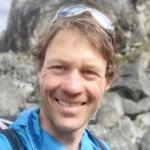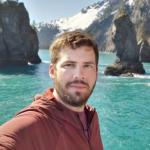ANCHOR - Arctic Network for Coastal Community Hazards, Observations, and Integrated Research
This Research Coordination Network (ANCHOR) will integrate social science, natural science, and engineering to address the imminent challenges that coastal communities in the Alaskan Arctic face due to rapid permafrost thaw and coastal erosion. These processes are causing buildings, roads, and areas of cultural significance to be undermined as coastlines subside and collapse into the sea. These communities are considering a range of options, which include abandoning their homelands for higher ground or building seawalls to limit erosion. At the same time, opportunities are now being realized for communities to participate in monitoring of the environmental processes that are occurring. Through the activities of ANCHOR, local communities will participate in monitoring that will help inform their decision-making processes. Overall, ANCHOR will help to develop scientifically robust approaches for coastal communities to respond to coastal erosion. Further, some activities will be focused in one local coastal community in Alaska in order to evaluate approaches developed through ANCHOR. This project promotes convergence by integrating understanding of the social processes of community decision-making under duress and uncertainty with advances in relevant natural science disciplines (coastal geophysics, soil physics, climate modeling, and atmospheric science) and disciplines in civil and environmental engineering (geotechnical engineering, risk assessment, water, and wastewater treatment).
The ANCHOR project will integrate social science, natural science and engineering by employing a test-bed approach focused on a specific community to address the imminent challenges that coastal communities in the Arctic face due to rapid permafrost thaw and coastal erosion. These communities are now considering the drastic options of abandoning their homelands for higher ground or armoring in place, as buildings, roads, and culturally significant areas collapse into the sea. At the same time, opportunities are now being realized for communities to participate in local scale monitoring and research. To provide a scientific foundation for addressing these imminent decisions, this ANCHOR project will bring together leading natural and social scientists and engineers with local community leaders, state and federal managers, and NGOs to integrate local knowledge with state-of-the-art natural science and engineering. For example, ANCHOR will develop a monitoring network with community involvement in one Alaskan coastal community.
The primary ANCHOR objective is to create a test-bed for deep integration of social science, natural science, and local knowledge to optimize coastal community adaptation planning through: (1) Advancing the science of coastal hazards and infrastructure vulnerability forecasting, integrating human dimensions research related to adaptation; (2) Improving data quality, quantity, and availability, in part through effectively engaging the local community; (3) Assisting local communities in achieving their adaptation goals, through community-driven holistic approaches; and (4) Creating partnerships with local communities beyond the test-bed that are based on mutual respect for multiple ways of knowing, cultural values, and perspectives. Beginning in 2018, this four-year project will support community based monitoring of coastal change using simple survey equipment, HOBO recorders, and video cameras in remote Alaskan villages. Emphasis will be placed on monitoring shoreline position, the beach and bluff profile, the nearshore wave and water level, and nearshore water temperature—although the coastal monitoring effort will be directed by the interest and needs of the villages. Additional activities will include organizing workshops, conducting interviews of residents in the coastal communities, and creating an integrated coastal hazards forecasting model. A field team of 3-4 will be visiting the host community in some years of the project. During the community visits, workshops will be held in which coastal hazards and community vulnerability and resilience will be discussed. In addition, community-based coastal monitoring projects will be initiated or expanded upon. In other years the Hooper Bay residents may conduct work. In 2019, Hooper Bay residents deployed the sensor, retrieved it, and sent it back for analysis.
Season Field Sites
- 2019 Alaska - Hooper Bay
- 2020 Alaska - Hooper Bay
- 2021 Alaska - Hooper Bay
Principal Investigators
Publications
Project Outcomes
Our project focused on quantifying and communicating Arctic coastal risk to communities, including the risks of flooding and erosion. Our project had significant outcomes in three general areas:
First, as a Research Coordination Network (RCN), one of our goals was to develop a robust network of researchers focused in the area of Arctic coastal risk. We succeeded. For example, we developed a strong relationship with faculty of George Mason University (particularly Prof. Celso Ferreira). Our team has developed multiple successful research projects with George Mason including projects funded by NASA, NSF, and NOAA. In addition, a large proposed ONR project is currently under review. A second noteworthy relationship is one developed with Deltares-USA (Kees Nederhoff). We are currently working with Deltares-USA on the development of Arctic Xbeach, which is Arctic-capable open source for calculating coastal geomorphic change.
The second noteworthy outcome was in the area of estimating Arctic coastal risk to flooding and erosion. Arctic coastal communities are threatened by multiple hazards, and there are risks (costs) associated with those hazards. In some instances, communities feel that the hazards and risks are so large that relocation is the most viable option. We produced a methodology to quantify Arctic coastal risk to flooding and erosion that allows communities to better assess coastal risks and to make better decisions.
The third noteworthy outcome is in the area of community engagement and the surveying of the coastal community experience and preferences. Our project developed a case study at Hooper Bay Alaska, and we formed a Steering Committee of community members and others to guide the case study. We worked with the Steering Committee to develop and execute a survey of community members. Our survey quantified the experience of community members impacted by coastal storms made more impactful by climate change. It documented the socio-economic and psychological impacts of coastal storms, as well as the relocation preferences of community members.


